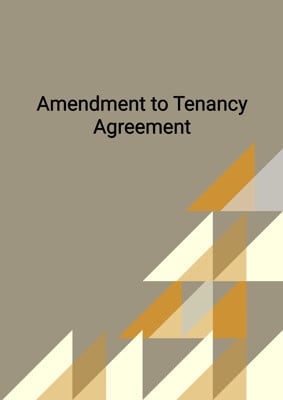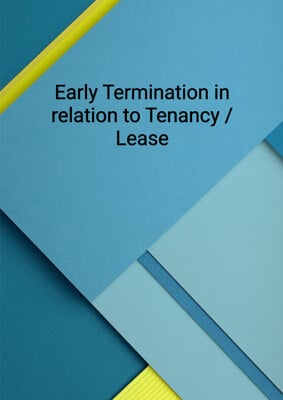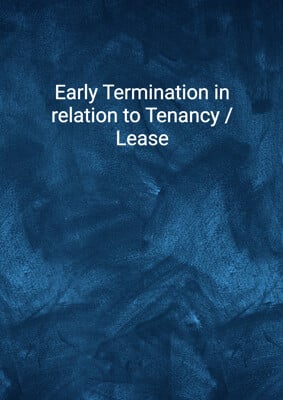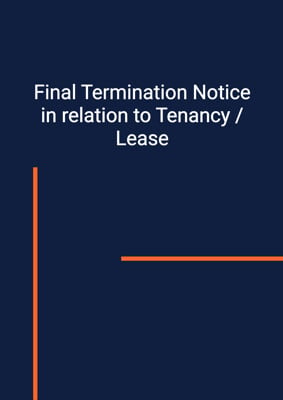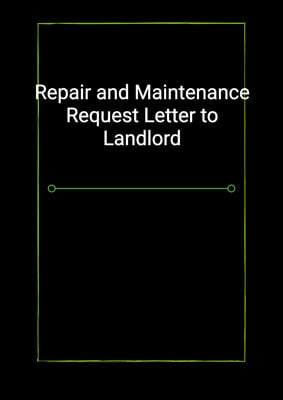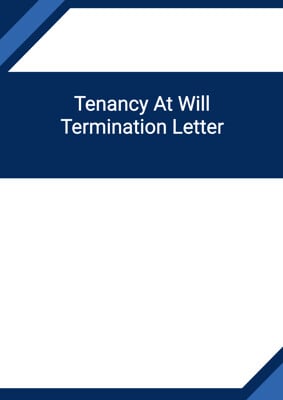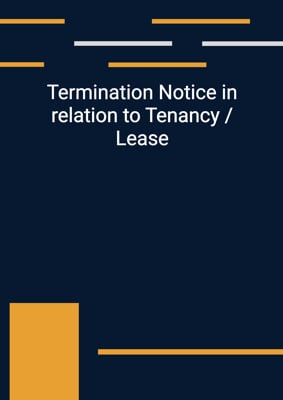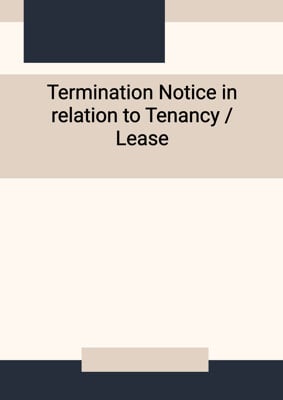How to Tailor the Document for Your Need?
01
Create Document
Fill in the details of the parties. You can click the "Fill with Member’s Information" button to complete it with information saved to your account.
02
Fill Information
Please fill in any additional information by following the step-by-step guide on the left hand side of the preview document and click the "Next" button.
03
Get Document
When you are done, click the "Get Document" button and you can download the document in Word or PDF format.
04
Review Document
The document should be signed by the authorised signatory (or directors of a company) and witnessed to complete the formality.
Document Preview
Document Description
The Deed of Surrender - Domestic is a legal document that outlines the agreement between a landlord and a tenant regarding the surrender of a property. This document is important as it formalizes the process of terminating the tenancy and ensures that both parties are aware of their rights and obligations.
The entire document consists of several sections that cover different aspects of the surrender process. The first section provides a background and context for the agreement, stating that it is being entered into between the landlord and the tenant. It also mentions the original agreement that was made between the parties, specifying the property, the term of the tenancy, and the terms and conditions contained in the original agreement.
The second section outlines the tenant's intention to surrender the unexpired residue of the term created by the original agreement to the landlord on the surrender date. It states that the tenant will deliver vacant possession of the premises to the landlord and that the surrender will result in the merger and extinguishment of the tenancy.
The third section addresses the tenant's obligations leading up to the surrender date. It states that the tenant must discharge all utility charges and observe all other terms and conditions of the original agreement until the surrender date. This ensures that the tenant fulfills their responsibilities and avoids any potential disputes.
The fourth section focuses on the return of keys, remote controls, and other properties of the premises. It states that the tenant must return these items to the landlord upon delivering vacant possession of the premises. Additionally, the tenant is responsible for repairing any damages to the premises before the surrender date.
The fifth section deals with the release of liabilities and obligations. It states that if the tenant has fulfilled their obligations and there are no arrears or outstanding charges, the landlord will release the tenant from all liabilities and obligations arising from the original agreement. However, this does not affect the landlord's right to pursue any claims for antecedent breaches committed by the tenant.
The sixth section addresses the refund of the security deposit. It states that the landlord will refund the security deposit to the tenant within 30 days of the surrender date, provided that all arrears and outstanding charges have been paid. If there are any deductions to be made from the security deposit, such as for outstanding obligations or rightful claims by the landlord, the tenant will be notified and the balance, if any, will be returned to them.
The seventh section mentions the sharing of stamp duty between the parties and the eighth section clarifies that only the parties to the agreement have rights to enforce its terms. The ninth and final section states that the deed is governed by the laws of the applicable jurisdiction.
Each section of the document serves a specific purpose and provides clarity on the rights and responsibilities of both the landlord and the tenant during the surrender process. It ensures that the surrender is conducted in a fair and legally binding manner.
How to use this document?
1. Deliver vacant possession: On the surrender date, the tenant must ensure that the premises are completely empty and free of any personal belongings. This includes removing all furniture, appliances, and other items.
2. Settle outstanding charges: Before the surrender date, the tenant must settle all outstanding utility charges, such as water, electricity, and telephone bills. Failure to do so may result in deductions from the security deposit.
3. Repair any damages: The tenant is responsible for repairing any damages to the premises caused during their tenancy. This includes fixing any broken fixtures, repairing walls or floors, and ensuring that the property is in good condition.
4. Return keys and properties: On the surrender date, the tenant must return all keys, remote controls, and other properties listed in the schedule. These items should be handed over to the landlord or their authorized representative.
5. Pay arrears and outstanding charges: To receive a full refund of the security deposit, the tenant must ensure that all rent, management fees, rates, and other outstanding charges are paid in full before the surrender date.
6. Provide receipts: Upon delivering vacant possession of the premises, the tenant must provide all relevant receipts showing the due payment of all outgoings and charges up to and including the surrender date.
7. Understand deductions: If there are any deductions to be made from the security deposit, the landlord will notify the tenant and provide a breakdown of the amounts deducted. The tenant should review these deductions and seek clarification if needed.
8. Share stamp duty: The stamp duty for preparing the agreement and its counterpart should be shared equally between the landlord and the tenant.
9. Seek legal advice if necessary: If there are any disputes or concerns regarding the surrender process, it is advisable for both parties to seek legal advice to ensure their rights are protected and the process is conducted in accordance with the law.
Not the right document?
Don’t worry, we have thousands of documents for you to choose from:

